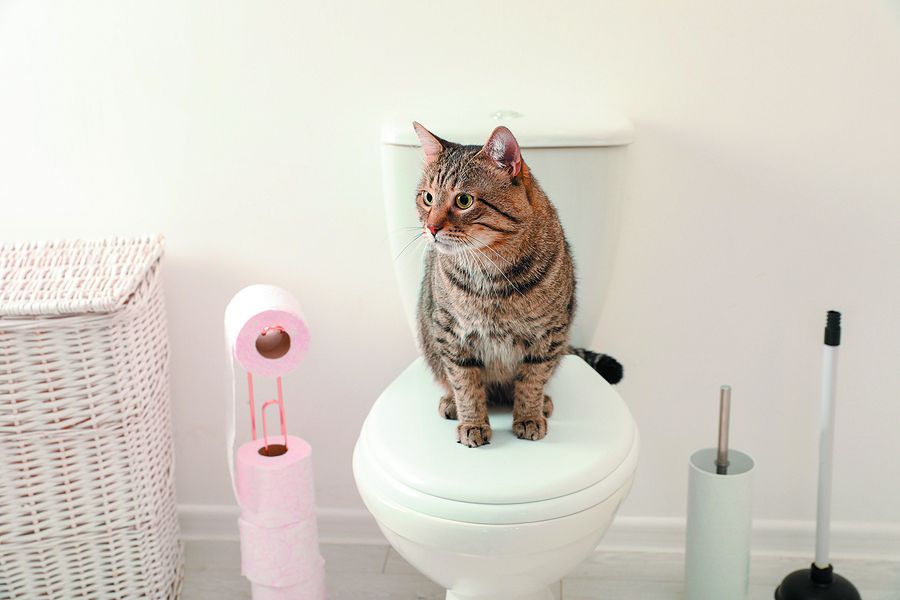Never Flush Cat Poop Down Your Toilet - Safeguard Your Pipes System
Never Flush Cat Poop Down Your Toilet - Safeguard Your Pipes System
Blog Article
They are making several good observations relating to How to Dispose of Cat Poop and Litter Without Plastic Bags in general in this article on the next paragraphs.

Intro
As pet cat proprietors, it's necessary to bear in mind just how we take care of our feline good friends' waste. While it may appear practical to purge feline poop down the commode, this method can have damaging repercussions for both the setting and human health and wellness.
Alternatives to Flushing
Luckily, there are safer and more accountable means to take care of feline poop. Take into consideration the following alternatives:
1. Scoop and Dispose in Trash
The most typical approach of disposing of feline poop is to scoop it right into an eco-friendly bag and throw it in the garbage. Make sure to utilize a specialized trash inside story and take care of the waste quickly.
2. Use Biodegradable Litter
Select naturally degradable feline clutter made from products such as corn or wheat. These clutters are environmentally friendly and can be securely dealt with in the garbage.
3. Hide in the Yard
If you have a yard, think about hiding pet cat waste in a marked area far from veggie gardens and water resources. Be sure to dig deep sufficient to prevent contamination of groundwater.
4. Install a Pet Waste Disposal System
Purchase a pet garbage disposal system especially created for feline waste. These systems make use of enzymes to break down the waste, lowering odor and ecological effect.
Health and wellness Risks
Along with ecological problems, purging cat waste can also pose wellness threats to humans. Cat feces might include Toxoplasma gondii, a parasite that can cause toxoplasmosis-- a potentially serious illness, specifically for pregnant females and people with damaged immune systems.
Environmental Impact
Flushing pet cat poop presents harmful virus and bloodsuckers into the supply of water, presenting a considerable risk to aquatic ecosystems. These impurities can negatively impact marine life and compromise water top quality.
Conclusion
Liable animal ownership expands past supplying food and sanctuary-- it also entails proper waste management. By avoiding purging cat poop down the commode and choosing alternative disposal methods, we can lessen our environmental footprint and protect human health.
CAN I FLUSH MY CAT'S POOP DOWN THE TOILET?
Always avoid flushing cat poop down the drain because not only could it potentially contain harmful parasites called toxoplasmosis, the litter could sit in your line and lead to a clog.
Plenty of waste gets flushed down your toilet every day, so what harm could a little cat poop and cat litter do? The answer is a lot, which is why you never want to send it down your drains.
Can I Flush My Cat's Poop Down The Toilet?One of the biggest problems with flushing your cat’s presents is the harmful parasites in your feline’s stool called toxoplasmosis. Extremely dangerous for humans, especially pregnant women and people who are immunocompromised, these parasites can cause a multitude of problems for unborn babies and even cause death or miscarriage if the infection happens early. That’s why you should always avoid touching cat poop. Also, water systems are not equipped to handle toxoplasmosis and are unable to destroy the parasite before it’s sent back into the environment, potentially jeopardizing the health of local area wildlife, specifically marine life.
Flushing cat poop could also lead to a future drain clog. Try as you may to eliminate any litter from it, there will always still be some stuck on there – and even if it says flushable on the label, it’s not! Cat litter is made up of bentonite clay, which has the tendency to harden when wet, creating a thick, almost cement-like quality. Cat litter that ends up down the drain can expand from the moisture in the pipes and then harden, blocking any wastewater. If you have a septic tank or a cesspool, it cannot handle cat litter either, no matter what kind. If it solidifies in the tank, in any of the system’s major parts like the inlet baffle, it’ll create some expensive problems.
The best way to dispose of cat poop safely is to scoop it into a bag and throw it into the trash – and ways of dealing with the smell include adding baking soda and replacing the box more.
Now that we’ve explained the potential harm that flushing cat poop can cause to you and your drains, you might be wondering the best way of dealing with it. Unfortunately, it’s the old-fashioned way of scooping it into a bag and then placing it into a trash can. They also make pet-proof trash cans that lock in the smell, so that you don’t have to always immediately take it out. If you’re tired of smelling the litter box after even just one use from your feline, there’s things you can do to help combat that smell. Adding baking soda to the litter will reduce smells, but just don’t add too much or your cat will no longer want to use the box. You could also replace the box more frequently, at least once a year, as those smells can just seep inside the scratch marks. Lastly, try changing to a new litter formula – some are better with smells than others.

We had been made aware of that report about Can You Flush Cat Poo or Litter Down the Toilet? from someone on another domain. Are you aware of anybody else who is truly interested in the topic? Do not hesitate to share it. Many thanks for going through it.
Call Today Report this page